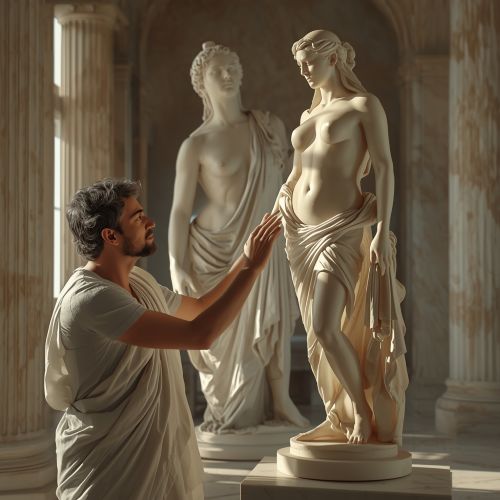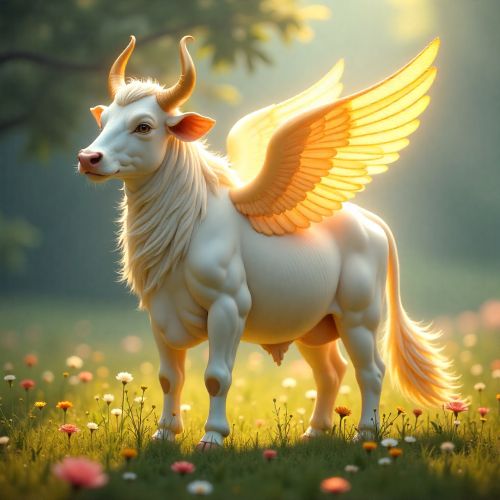Blessing of First Worship | Ganesha
Listen
At a glance
| Description | |
|---|---|
| Mythology | Indian Mythology |
| Bestowed Upon | Ganesha |
| Granted By | Shiva |
| Primary Effect | To be worshipped before any God |
| Conditions Attached | N/A |
Blessing of First Worship
Introduction
The Blessing of First Worship is one of the most profound and spiritually resonant traditions in Hinduism, deeply associated with Lord Ganesha, the elephant-headed deity of wisdom, intellect, and new beginnings. Revered as the remover of obstacles and the harbinger of success, Ganesha’s worship precedes that of all other gods in Hindu rituals. This ancient custom is not just a matter of ritual order but a divine decree with cosmic significance. Rooted in powerful mythological origins and reinforced by centuries of devotion, the Blessing of First Worship has come to embody the essence of auspicious beginnings, discipline, and spiritual harmony across Hindu culture and beyond.
Mythological Background
According to the Shiva Purana, Ganesha’s creation was an act of divine maternal will. Goddess Parvati formed him from the turmeric paste of her body to guard her chambers while she bathed. When Lord Shiva, her consort, tried to enter, Ganesha, unaware of Shiva’s identity, stopped him as ordered. Enraged by this defiance, Shiva beheaded Ganesha, leading to Parvati’s sorrow and fury. To console her, Shiva promised to restore their son’s life. The head of a sacred elephant was placed on Ganesha’s body, breathing life back into him. To honor his courage and devotion, Shiva granted Ganesha a unique boon — that he would be worshipped before any other god in all ceremonies.
This divine moment marks the beginning of the Blessing of First Worship, symbolizing Ganesha’s transformation not only in form but in cosmic stature. His role as the guardian of thresholds and beginnings was established, making him the first deity invoked in every ritual, a tradition that remains unbroken to this day.
Granting of the Boon/Blessing
The Blessing of First Worship originated directly from Lord Shiva’s proclamation. Recognizing Ganesha’s unwavering duty, Shiva declared that from that day onward, no deity would be honored before him. This decree was accepted by all gods, including Vishnu and Brahma, marking Ganesha as the supreme gatekeeper of divine ceremonies.
In other variations of the legend, Goddess Parvati herself reinforces this blessing, ensuring that Ganesha’s name is invoked first to guarantee the success of any spiritual or worldly pursuit. The blessing was not just a token of parental love but a cosmic law that integrated Ganesha into the very foundation of Hindu ritual life. Every invocation, prayer, and offering begins with his name, symbolizing purity, preparation, and divine order.
Nature of the Boon/Blessing
The nature of this blessing is both ritualistic and spiritual. It gives Ganesha dominion over beginnings, transitions, and thresholds — the moments when human endeavors require divine favor the most. Known as Vighnaharta (the remover of obstacles), Ganesha’s invocation clears both internal and external barriers, ensuring that any action undertaken begins in harmony.
His worship also embodies deep philosophical meaning. The elephant head represents supreme wisdom, while his small eyes signify focus and perception. His large belly symbolizes the ability to digest all experiences — pleasant or painful — with equanimity. Thus, invoking him first is not just tradition but an act of aligning oneself with balance, intellect, and readiness for success.
Recipients and Key Figures
The primary recipient of the Blessing of First Worship is Lord Ganesha himself, whose divine parents, Shiva and Parvati, play central roles in its granting. Sage Narada is often mentioned as a witness to the event, spreading knowledge of the boon among gods and humans alike.
However, the true recipients of this blessing extend beyond Ganesha — it includes every devotee who honors him first. By performing the Ganapati Vandana or Ganesh Puja before any task, worshipper, or ceremony, individuals symbolically align themselves with cosmic order and divine protection. The practice unites millions of devotees across regions, faiths, and even cultures, transcending sectarian divides and affirming Ganesha’s universality.
Effects and Consequences
The granting of this blessing reshaped the structure of Hindu worship forever. Every ritual, from daily prayers to elaborate temple festivals, begins with Ganesha’s invocation. Without his blessing, it is believed, no ceremony can achieve its full sanctity or success. This rule of precedence also extends beyond religion — artists, writers, entrepreneurs, and students often begin their endeavors by invoking Ganesha’s name, trusting his divine energy to remove obstacles.
The blessing also had profound cultural consequences. Ganesha’s image became omnipresent — adorning temple entrances, household shrines, and even modern businesses as a sign of prosperity and protection. His role evolved from a mythic guardian to a symbol of intellect, art, and success in daily life. Theologically, this established him as the deity bridging human effort with divine grace.
Symbolism and Spiritual Meaning
Spiritually, the Blessing of First Worship carries immense depth. Ganesha represents the essence of spiritual initiation — every journey toward knowledge, success, or self-realization begins by confronting and overcoming obstacles. His elephant head signifies wisdom and foresight, while his broken tusk symbolizes sacrifice and the pursuit of knowledge. The small mouse at his feet represents human desires, controlled and guided by divine wisdom.
To worship Ganesha first is to acknowledge that all human action requires humility, clarity, and balance. It reminds devotees that success lies not merely in effort but in alignment with cosmic energy. Thus, every invocation of Ganesha is both a prayer and a psychological preparation, cleansing the mind of doubt and inviting focus before action.
Cultural Impact and Legacy
The cultural legacy of the Blessing of First Worship extends across centuries and continents. In India, the tradition permeates every layer of society — from elaborate temple rituals in Tamil Nadu and Odisha to household prayers in Maharashtra and Gujarat. The grand festival of Ganesh Chaturthi, revived in the 19th century by Bal Gangadhar Tilak, transformed Ganesha into a national symbol of unity and resistance during British colonial rule.
Beyond India, the blessing’s influence has spread widely. In Nepal, Bali, Thailand, and parts of Cambodia and Indonesia, Ganesha is revered as the god of intellect and success. In Buddhist traditions, particularly in Tibet and China, Ganesha’s iconography has merged with local deities, symbolizing prosperity and wisdom. His image appears on coins, universities, and even in popular culture as a representation of creativity and problem-solving.
In modern India, Ganesha’s presence has transcended religion to become a universal symbol of positivity and perseverance. From corporate offices seeking good fortune to students invoking his blessings before exams, the spirit of the Blessing of First Worship continues to guide people through transitions and challenges. His festivals, chants, and artistic depictions not only celebrate his mythic glory but also preserve a living connection between divine tradition and human endeavor.
Source
Borwankar, G. (2025, August 15). Shri Ganesh, Lord of New Beginnings. Siddha Yoga. https://www.siddhayoga.org/shri-ganesh/the-lord-of-new-beginnings
Dasadas. (2024, September 5). Lord Ganesha’s topmost blessing. Dasadas. https://dasadas.com/2024/09/06/lord-ganeshas-topmost-blessing/
Gayatri Heritage. (2024, December 10). Why Lord Ganesha Is Worshipped First in Hindu Rituals. https://gayatriheritage.com/blogs/our-blogs/why-lord-ganesha-is-worshipped-first-in-hindu-rituals
Lotus Sculpture. (2024, December 1). Hindu God Ganesh Puja & Why Worship Lord Ganesha First? https://www.lotussculpture.com/blog/god-ganesha-puja-aarti-reasons-why-lord-ganesh-is-worshiped-first/
Pluralism Project. (1994). Ganesha: the Lord of Beginnings. https://pluralism.org/ganesha-the-lord-of-beginnings
Study.com. (2023, August 29). Ganesha | Meaning, Features & Symbolism. https://study.com/academy/lesson/who-is-the-hindu-god-ganesha-symbols-meaning.html
Vredeveld, P. (1999). Lord Ganesha – The God of wisdom, prosperity and good fortune. Original Buddhas. https://www.originalbuddhas.com/blog/lord-ganesha
Art of Living (2024, July 8). Why is Lord Ganesha worshipped first? https://www.artofliving.org/in-en/culture/reads/why-lord-ganesha-worshipped-first
Frequently Asked Questions
What is lorem Ipsum?
I am text block. Click edit button to change this text. Lorem ipsum dolor sit amet, consectetur adipiscing elit. Ut elit tellus, luctus nec ullamcorper mattis, pulvinar dapibus leo.
What is lorem Ipsum?
I am text block. Click edit button to change this text. Lorem ipsum dolor sit amet, consectetur adipiscing elit. Ut elit tellus, luctus nec ullamcorper mattis, pulvinar dapibus leo.
What is lorem Ipsum?
I am text block. Click edit button to change this text. Lorem ipsum dolor sit amet, consectetur adipiscing elit. Ut elit tellus, luctus nec ullamcorper mattis, pulvinar dapibus leo.
What is lorem Ipsum?
I am text block. Click edit button to change this text. Lorem ipsum dolor sit amet, consectetur adipiscing elit. Ut elit tellus, luctus nec ullamcorper mattis, pulvinar dapibus leo.
What is lorem Ipsum?
I am text block. Click edit button to change this text. Lorem ipsum dolor sit amet, consectetur adipiscing elit. Ut elit tellus, luctus nec ullamcorper mattis, pulvinar dapibus leo.







